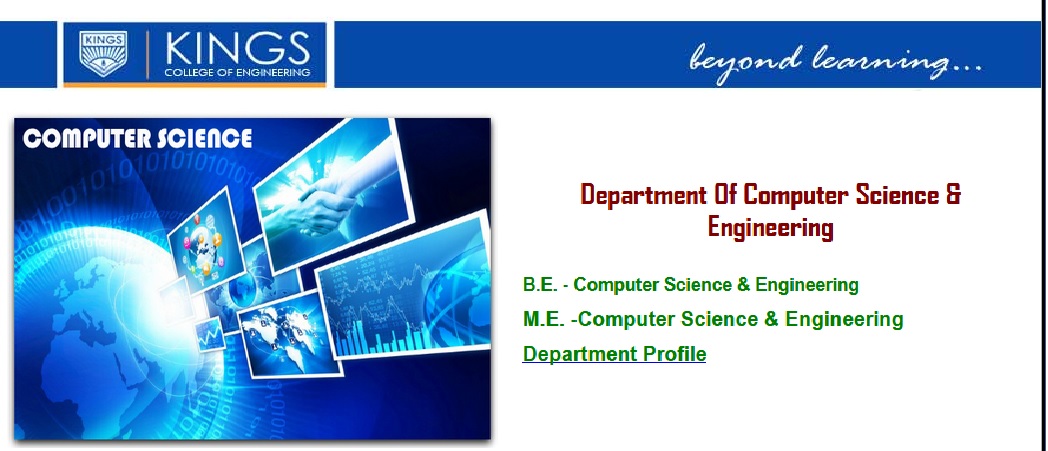CS2254 Operating Systems Question Bank : kings.ac.in
Name of the College : Kings College Of Engineering
Department : Computer Science & Engineering
Subject : Operating Systems
Website : kings.ac.in
Document Type : Question Bank
Download Model/Sample Question Paper : https://www.pdfquestion.in/uploads/ki…%20SYSTEMS.pdf
Kings Operating Systems Question Paper
UNIT I
PROCESS AND THREADS:
PART – A :
1.What is an Operating system?
2. Why is the Operating System viewed as a resource allocator & control program?
3. What is the Kernel?
Related / Similar Question Bank :
Kings College Computer Science Engineering Question BankArtificial Intelligence (CS2351)
Database Management System (CS2255)
Computer Organization & Architecture (CS2253)
4. What are Batch systems?
5. What is the advantage of Multiprogramming?
6.What is an Interactive computer system?
7. What do you mean by Time-sharing systems?
8. What are multiprocessor systems & give their advantages?
9. What are the different types of multiprocessing?
10.What is graceful degradation?
11.What is Dual-Mode Operation?
12.What are privileged instructions?
13.How can a user program disrupt the normal operations of a system?
14.How is the protection for memory provided?
15.What are the various OS omponents?

16.What is a process?
17.What is a process state and mention the various states of a process?
18.What is process control block?
19.What are the use of job queues, ready queues & device queues?
20.What is meant by context switch?
21.What is co-operating process?
22. State any two distinguishing features of UNIX and Windows.
23. What is spooling?
24.Classify Real time systems.
25. Mention the features of real time systems
26.Define a thread. State the major advantages of threads.
27.State the assumption behind the bounded buffer producer consumer problem.
28.Discuss the differences between symmetric and asymmetric multiprocessing.
29. Define System calls
PART- B :
1. Explain the various types of computer systems. (16)
2.Explain how protection is provided for the hardware resources by the operating system. (16)
3.What are the system components of an operating system & explain them? (16)
4. Write about the various system calls. (16)
5. What are the various process scheduling concepts? (16)
6. Explain about interprocess communication. (16)
7.Give an overview about threads. (16)
8.Explain in detail about the threading issues. (16)
9.a) (i) Explain the facilities provided by the following operating system (10)
(ii) List out the services provided by operating systems to programs and to the users of program. (6)
10.i) Explain the process creation and termination process on process. (8)
ii) Write short notes on co-operating process and schedulers. (8)
11.a) i) List and discuss the various services provided by the operating system. (8)
ii) List and discuss the important modules of an operating system (8)
13 Describe the essential properties of Real time operating Systems (8)
14 a. (i)Explain the different operations of processes. (6)
ii) Differentiate symmetric and asymmetric multiprocessing system. (5)
iii) In what ways is the modular kernel approach similar to the layered approach? In what ways does it differ from the layered approach? (4)
15. a) i) Discuss the critical section problem. State the basic requirements of critical section problem solution. (6)
ii) Explain implementation of producers/Consumers problem using monitor. (10)
UNIT II
PROCESS SCHEDULING AND SYNCHRONIZATION:
PART – A :
1.What is the purpose of system programs?
2.What is a thread?
3.What are the benefits of multithreaded programming?
4.Compare user threads and kernel threads. User threads, Kernel threads
5.What is the use of fork and exec system calls?
6.Define thread cancellation & target thread.
7.What are the different ways in which a thread can be cancelled?
8.Define CPU scheduling.
9.What is preemptive and nonpreemptive scheduling?
10.What is a Dispatcher?
11.What is dispatch latency?
12.What are the various scheduling criteria for CPU scheduling?
13.Define throughput?
14.What is turnaround time?
15.Define race condition.
16.What is critical section problem?
17.What are the requirements that a solution to the critical section problem must satisfy?
18.Define entry section and exit section.
19.Give two hardware instructions and their definitions which can be used for implementing mutual exclusion.
20.What is semaphores?
21.Define busy waiting and spinlock.
22. What is bounded waiting in critical region?
23. What are the four necessary conditions a system should posses in order to be terme deadlock?
24.Explain associative mapping.
26. State the assumption behind the bounded buffer producer consumer problem
27. What do you mean by a critical section problem
28. Define the use of Monitor
PART –B :
1. Write about the various CPU scheduling algorithms. (16)
2. Write notes about multiple-processor scheduling and real-time scheduling. (8)
3.What is critical section problem and explain two process solutions and multiple Process solutions? (8)
4.Explain what semaphores are, their usage, implementation given to avoid busy waiting and binary semaphores. (8)
5.Explain the classic problems of synchronization. (8)
6.Write about critical regions and monitors. (8)
7.Give a detailed description about deadlocks and its characterization (16)
8.Write in detail about deadlock avoidance. (8)
9.Explain the Banker’s algorithm for deadlock avoidance. (8)
10.Give an account about deadlock detection. (8)
11.What are the methods involved in recovery from deadlocks? (8)
12.What is the important feature of critical section? State the dining philosophers problem and how how to allocate the several resources among several processes in a deadlock and starvation free manner. (16)